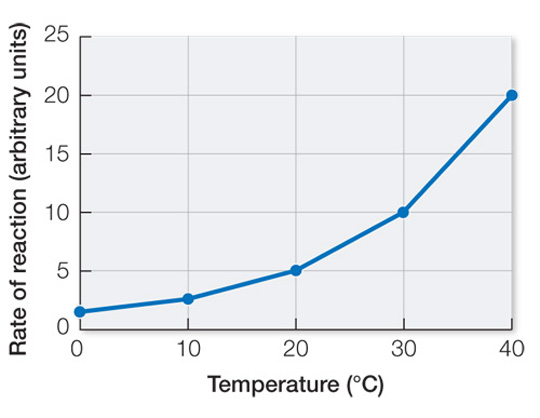recap
39.3 recap
Cells can survive only within a narrow range of temperatures, but even changes within that range can be disruptive because different physiological processes have different temperature sensitivities.
learning outcomes
You should be able to:
Explain why animals’ body temperatures must be maintained within narrow ranges.
Plot a given Q10 value for a biochemical process.
Explain how isozymes may be involved in seasonal temperature acclimatization.
Question 1
Explain how fluctuations in body temperature can disrupt complex physiological processes.
Fluctuations in body temperature can disrupt complex physiological processes because different steps or components of those processes are likely to have slightly different Q10 values. As a result, a temperature change can alter the integration of those steps or components.
Question 2
Plot a Q10 = 2.5 curve for a physiological process.

Question 3
What characteristic of isozymes might explain their role in metabolic seasonal temperature acclimatization?
Isozymes can have different temperature optima, so expressing different isozymes that have temperature optima that match seasonal changes in the climate can result in seasonal acclimatization.
Now that you know how animals are affected by temperature, we next take a look at the adaptations that allow animals to survive wide ranges of thermal environments and wide ranges of metabolic activities.